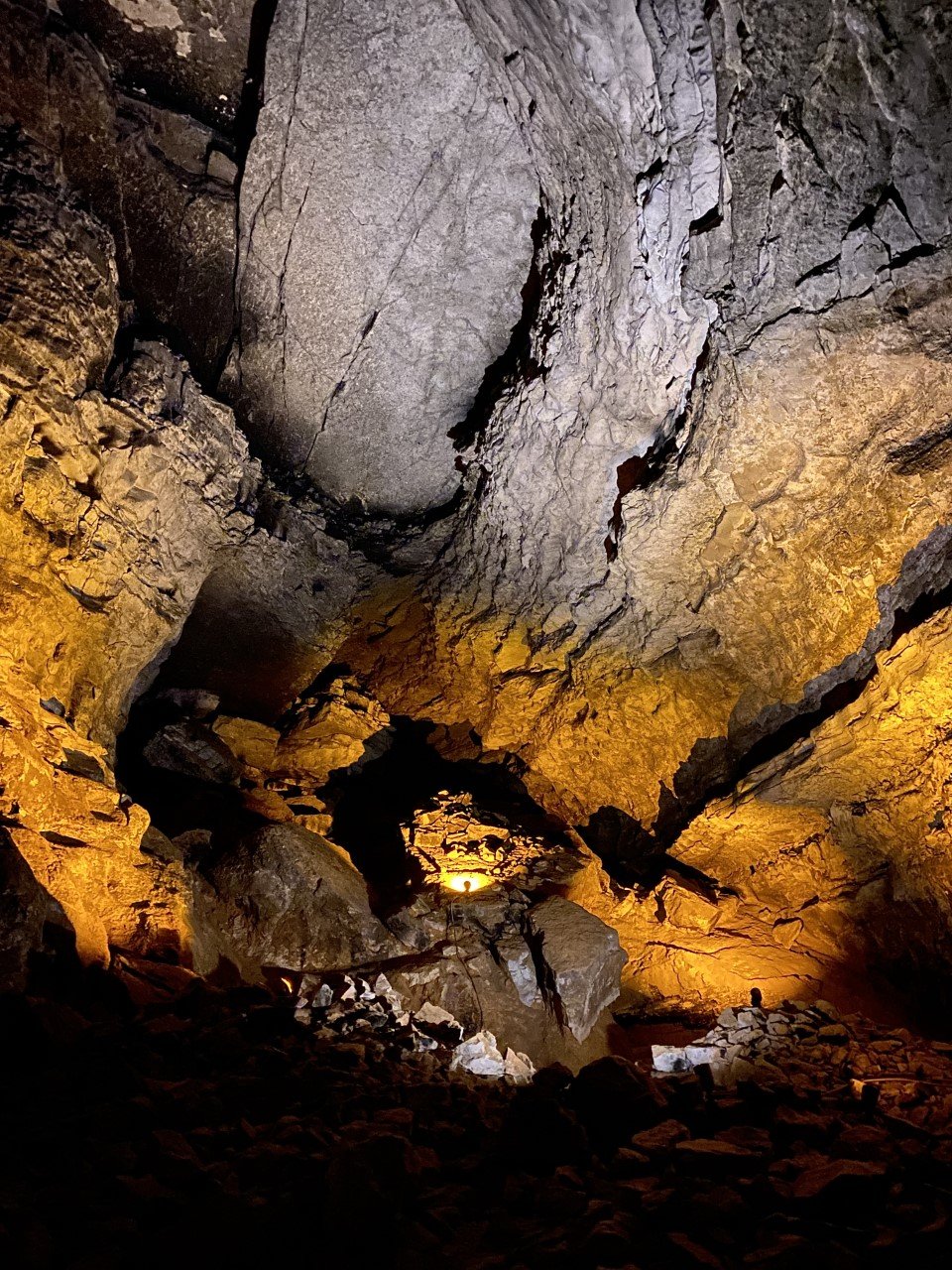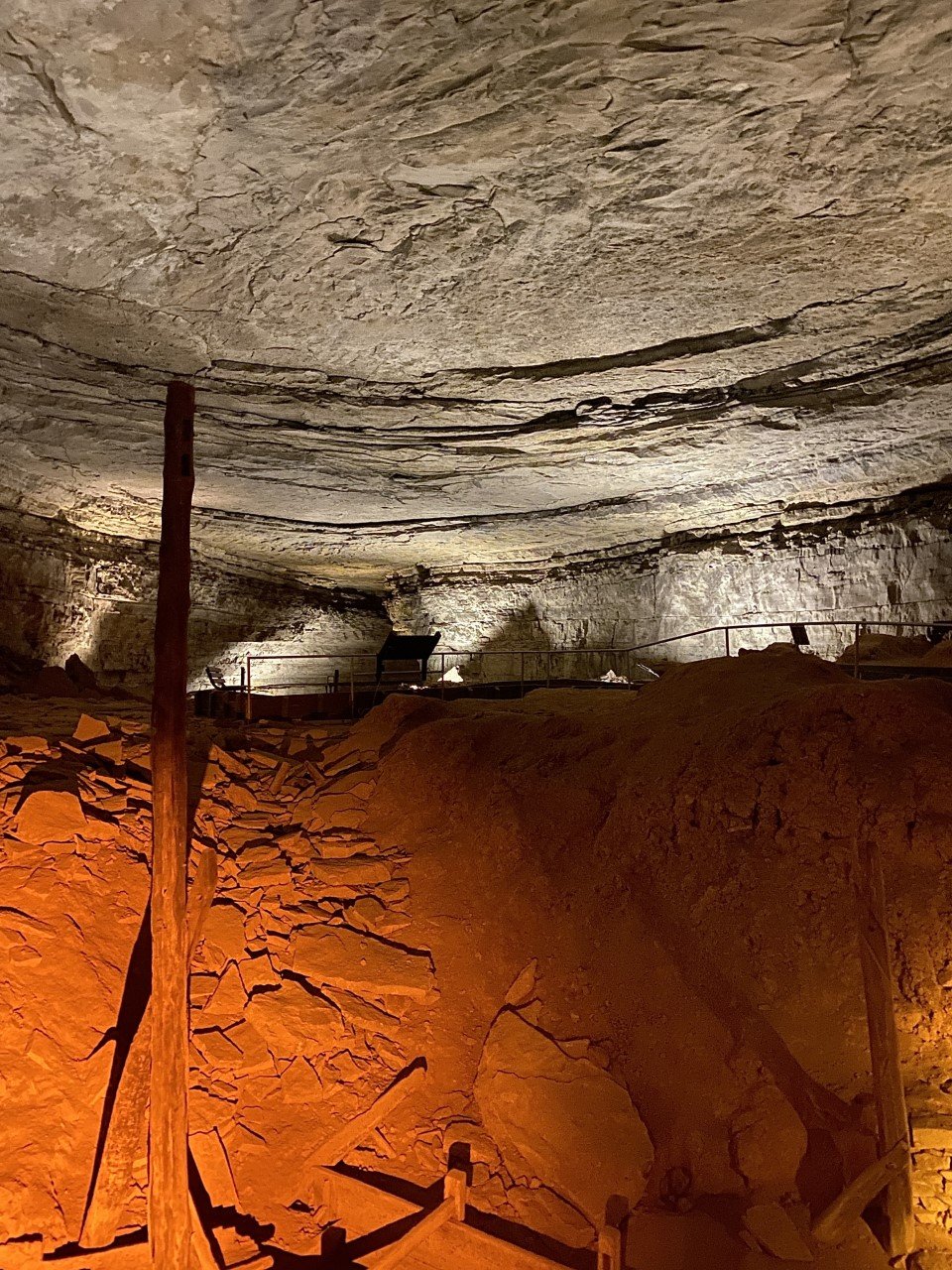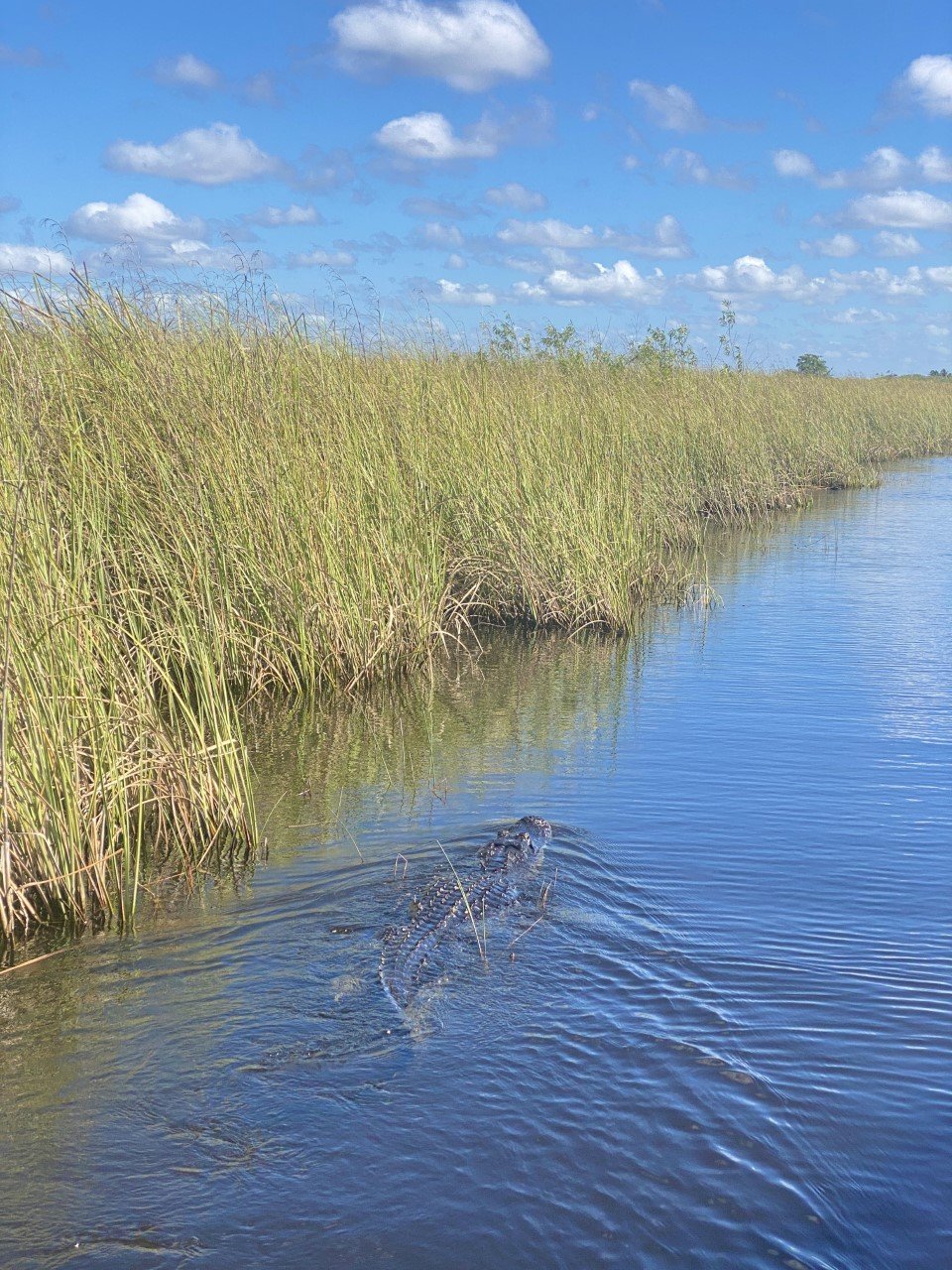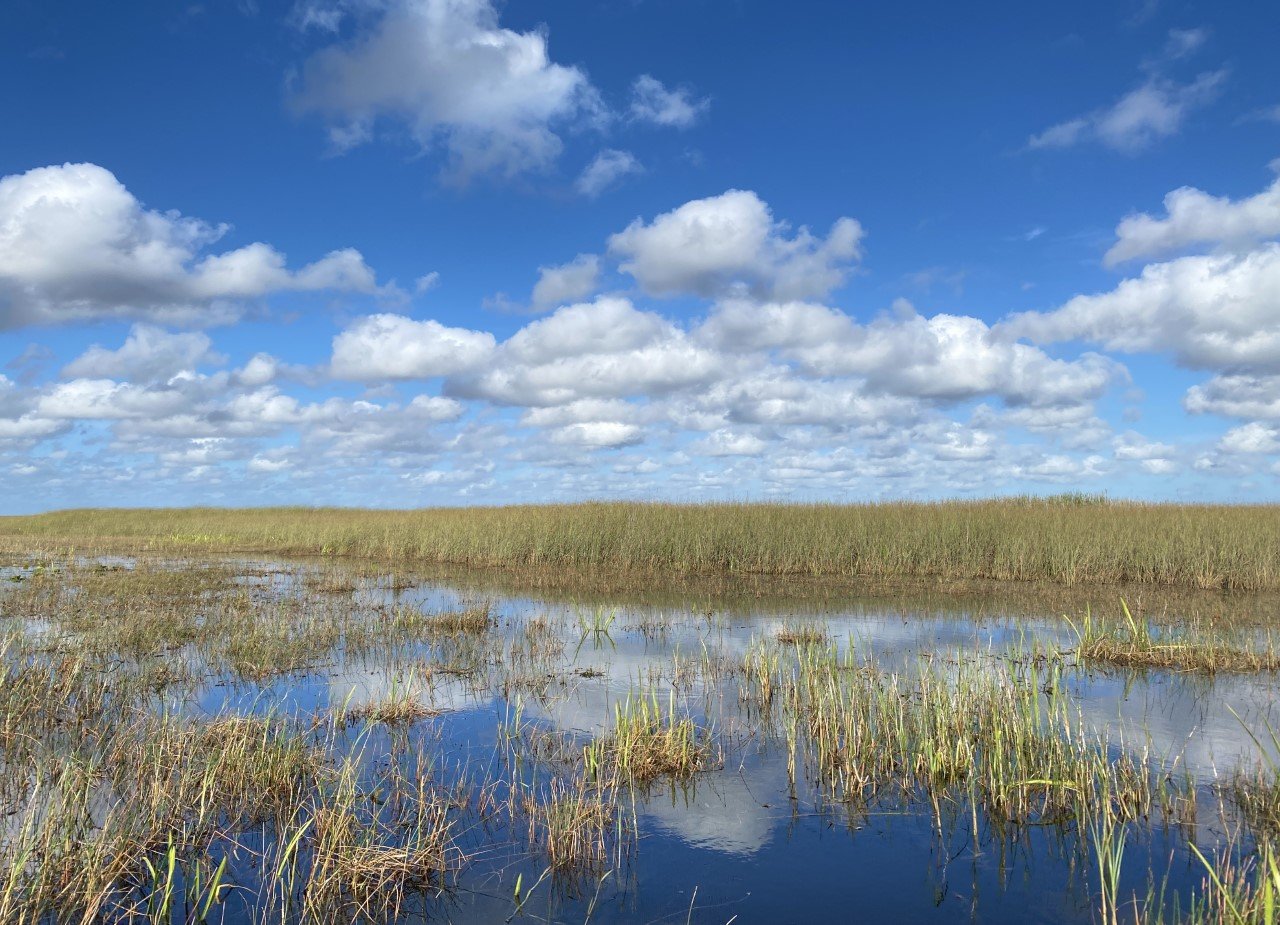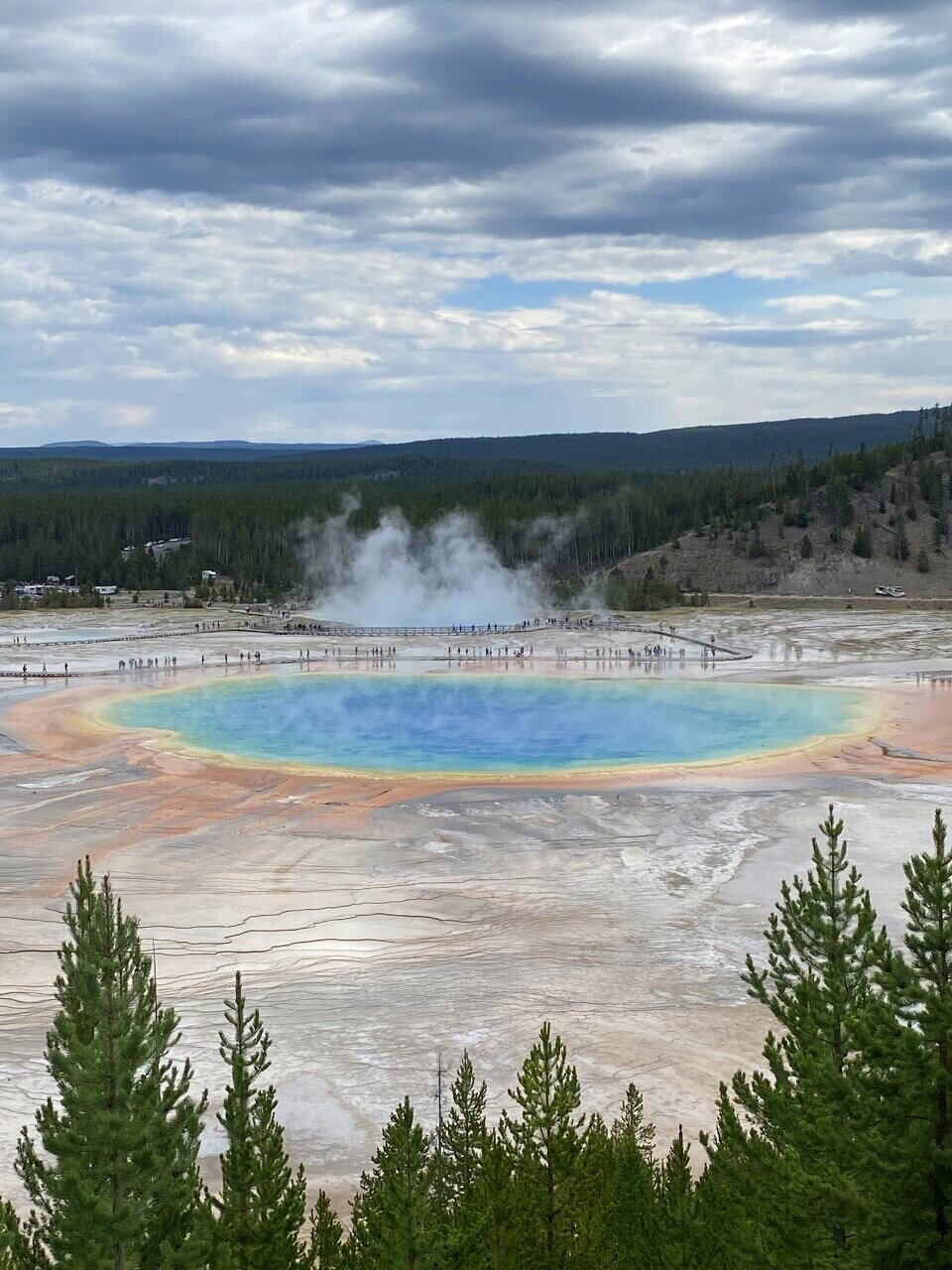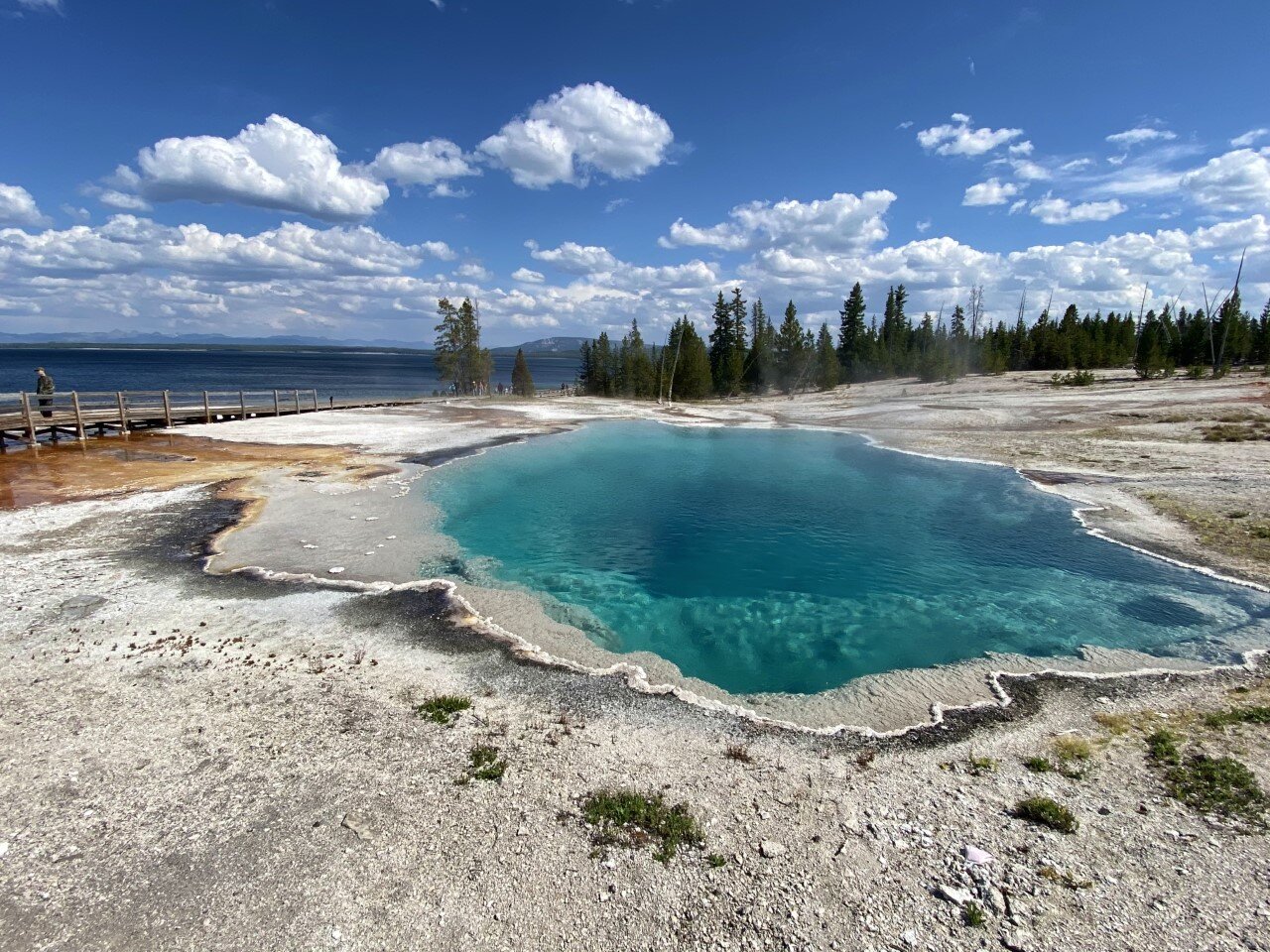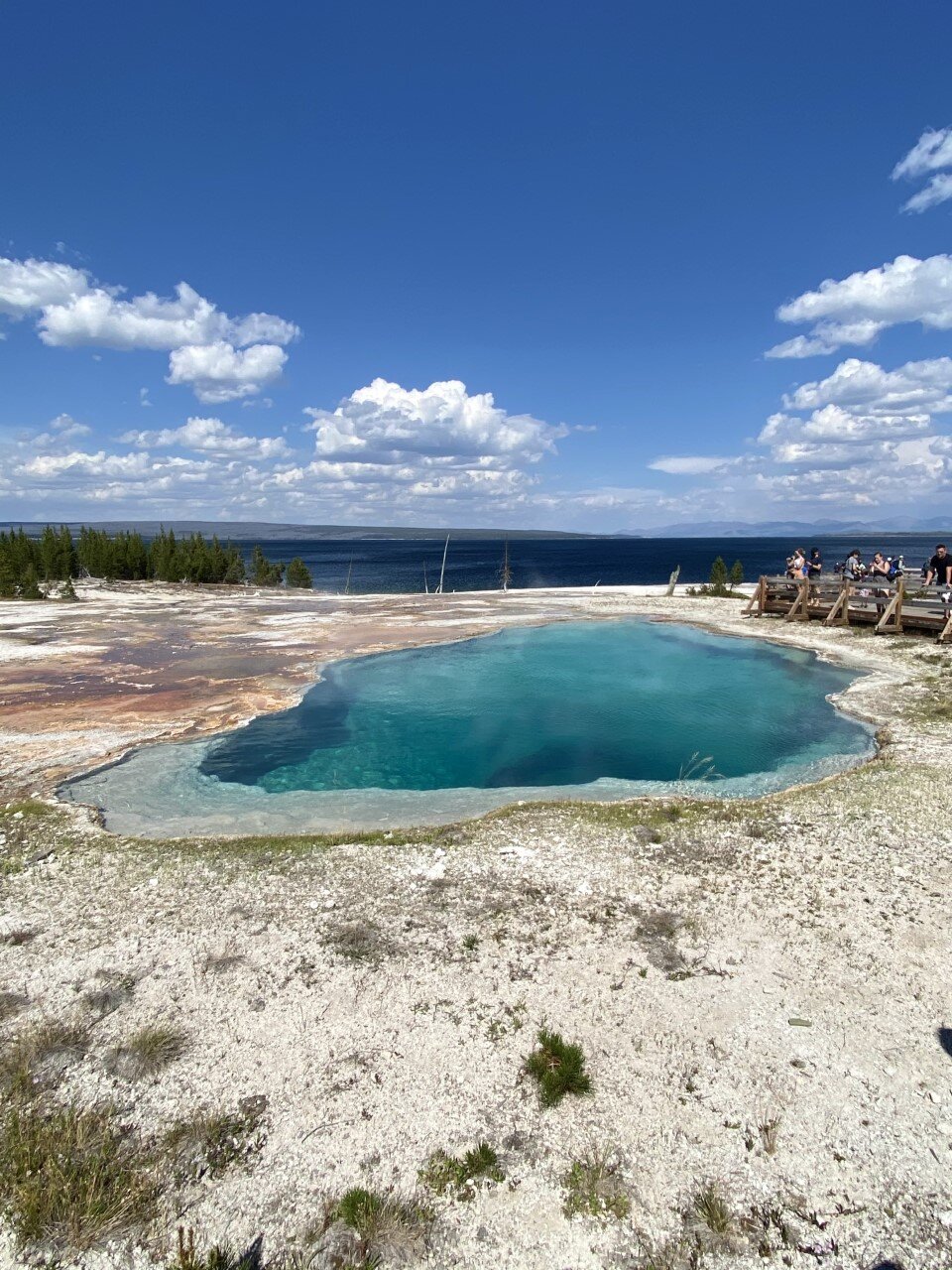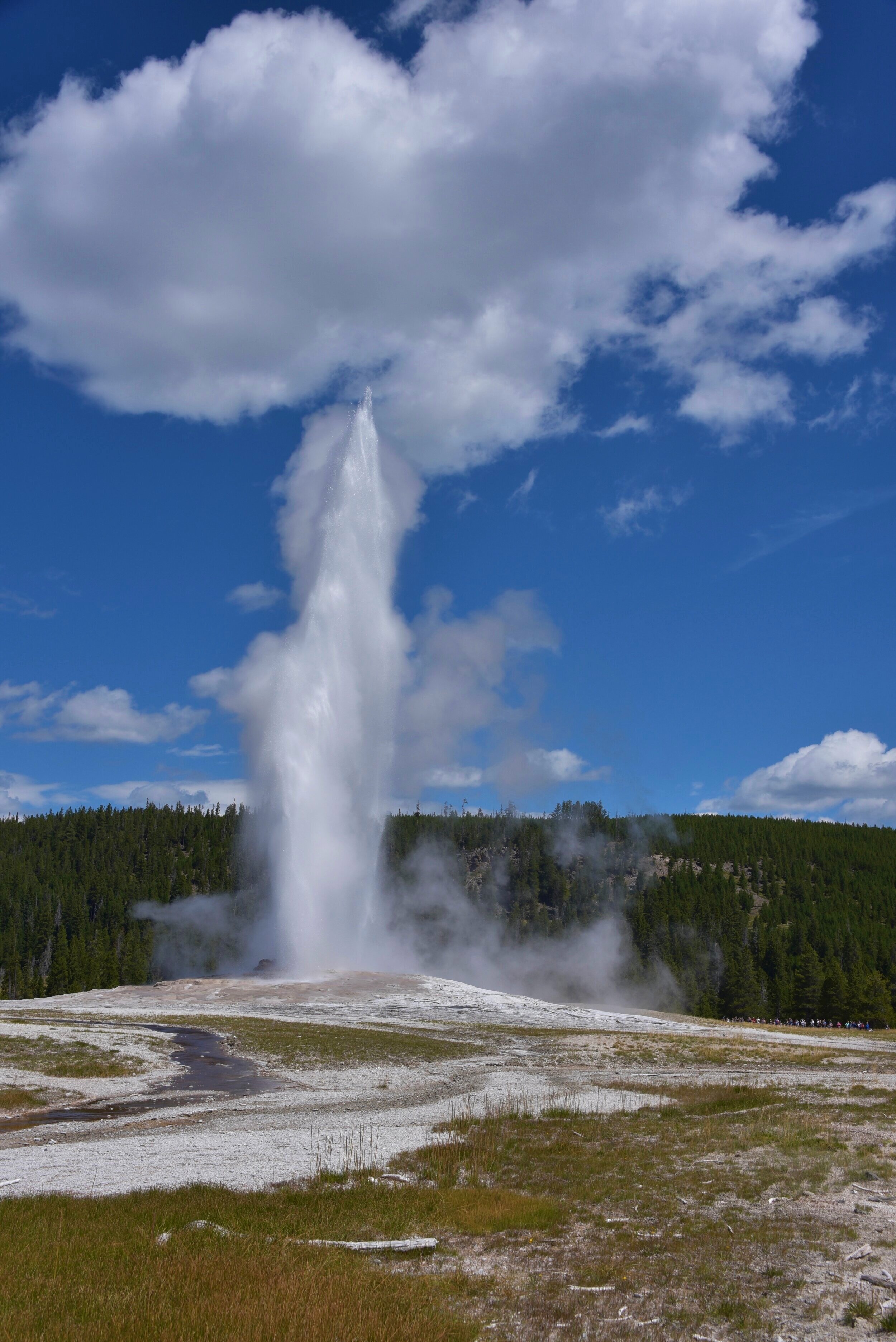Four Reasons to Visit Nevada’s Greatest Gem (No, Not Vegas)
And that’s how I landed on visiting my 44th national park. What I did not plan for is loving northern Nevada as much as I did. Here are four big reasons why this small town…
Summit of Wheeler Peak, the highest mountain in Nevada’s Great Basin National Park, June 25, 2024.
When one of my close friends decided to get married in beautiful Breckenridge, I immediately knew I’d extend my trip. Flying to that part of the U.S. isn’t as easy as driving to the mountains in the Northeast, so I wanted to take full advantage of my time out west. After last summer’s excursion to Isle Royale National Park off the coast of Michigan and Virgin Islands National Park a few months prior, the more remote a park is, the more I seem to enjoy it.
I mapped out the closest new-to-me park from Denver and there was only one national park that was remotely in driving distance. To be fair, driving distance is relative, but to me, a ten-hour drive, partly along America’s loneliest highway, sounded like the perfect plan.
And that’s how I landed on visiting my 44th national park: Great Basin National Park in Baker, Nevada. What I did not plan for is loving northern Nevada as much as I did. Here are four big reasons this small town made its way to the top of my favorites list:
Stella Lake from the Stella Lake trail heading to Wheeler Peak.
Wow, does this park genuinely have it all! From the world’s oldest living organisms to the state’s (technically) highest peak and only glacier, Great Basin National Park should be on everyone’s list of places to explore.
Hike Wheeler Peak
Y’all know I love a good hike, and after hiking a couple 14ers in Colorado, I was ready to take on Nevada’s second highest peak. Nevada’s highest peak, Boundary Peak, is only about 70 feet higher and partially in another state, but one minute at Wheeler Peak’s summit will make you feel like you’re on top of the world.
At 13, 063 feet, this peak towers over Great Basin National Park. A little over 8 miles and 3,000 feet of climbing, this trail was very easy to follow. I brought microspikes and trekking poles, but did not need to use them.
Explore the Oldest Bristlecone Pines in the World
Bristlecone Pine Glacier Trail
Great Basin bristlecones are over 5,000 years old. There’s a short trail from the Wheeler Peak campground that takes you through an informational path of the bristlecone pines. Definitely worth a detour if you’re already at the campground.
Dip Your Toes in an Alpine Lake
There are a handful of alpine lakes in Great Basin National Park. The most popular ones are found along the Alpine Lakes Loop leaving from the Wheeler Peak campground. I took the Stella Lake trail up Wheeler Peak, so I had the joy of staring at Stella Lake for awhile as I made my way to the summit. Once atop Wheeler Peak, I had a birds-eye-view of three alpine lakes. Three! I felt great getting off the mountain, so I added in the Alpine Lakes Loop and my feet were glad I did. Stella Lake is the largest of the three, but my favorite was Teresa Lake. Turquoise blue waters, a view of Wheeler Peak, I couldn’t ask for a better ending to the day’s hike. I woke up early the next morning for another dip and had the lake all to myself for a couple hours.
Gaze at Nevada’s Only Glacier (while it’s still there!)
If you’re on the Bristlecone Pines Trail, you can continue hiking for a little under a mile to see Nevada’s last remaining glacier. I know this park is remote, but I am truly shocked it’s one of the least visited. There is so much history packed into this park that everyone can find something to take away from a trip here.
Tips: Great Basin National Park is at a higher altitude than most visitors live at. Remember to hydrate, pack ibuprofen, and take it easy as you adjust. If you’re sensitive to the sun, higher altitudes bring you closer to the sun, so pack the sunscreen!
Best time of year to visit: There’s something to see in every season, but if you’re outdoorsy, winter conditions close the main (and only) road, Wheeler Peak Scenic Road, into Great Basin National Park. I visited in mid-June when snow had mostly melted. It’s not uncommon for snow to be present until the end of June depending on how heavy winter was that year.
Cost: Great Basin National Park is currently free of charge to explore.
Where to stay: The park offers campgrounds, but I highly recommend Stargazer Inn.
2. Stargazer Inn and Bristlecone General Store
Baker is a small town with a big heart, largely thanks to the owners of the Stargazer Inn. As I’m getting older, I find I gravitate toward a small town feel (if that was not evident by my desire to find the most remote parks and explore them). I have visited plenty of America’s biggest cities, and nothing attracts me more than a small town where locals are welcoming, the food is delicious, and the views are endless.
This trip I chose not to camp to minimize my packing list, so I was looking into stays around each of my destinations. I came across Stargazer Inn, a quaint inn right in the heart of Baker, Nevada mere minutes from Great Basin National Park. I gave Liz a call and sure enough she had a room for me to stay. What she also had, was a connection to Western Mass since she and her husband actually lived here for several years. This little pocket of Nevada is over 2,500 miles from me and yet it still felt like home— thanks to Liz.
Liz and James are the owners of Stargazer Inn and they also host monthly events that cultivate a community in Baker with meet-ups for book clubs, full moon hikes, and more!
I love camping, but my room at the Stargazer Inn put my mind at ease as a solo female traveler, kept my packing list minimal thanks to so many amenities (laundry room, small kitchenette with a fridge, microwave, and coffee!), and saved on travel time to the park. The Stargazer Inn has 10 rooms to stay in, and also offers RV and van hook-up sites.
Address: 115 S. Baker Ave. Baker, NV 89311
Contact: Email Liz at stay@stargazernevada.com or give her a call at 775-234-7323.
Tips: The Stargazer Inn also features a general store, the Bristlecone General Store for any supplies you might run low or run out of. Or maybe if you underestimate the Sierras sunshine like I did, there’s plenty of aloe vera to purchase there.
3. Female-Owned Food Businesses
With most of my trips incorporating long hikes, part of my trip always includes finding food gems. And in a town with only one street and a population that’s smaller than my 7th grade first period class, I was hesitant about where I’d find a post-hike meal. I stocked up on food prior to arriving, but was surprised by the two finds I came across:
Sugar, Salt, and Malt Restaurant (70 Baker Ave. Baker, NV 89311)
After my hike up Wheeler Peak, I was ready to eat. I walked into Sugar, Salt, and Malt and when I saw the white sauce pizza on the menu, I was sold.
This pizza included chicken Italian sausage, roasted garlic, ricotta cheese atop artichoke heart and spinach cream sauce with a balsamic reduction. In what feels like the middle of nowhere Nevada, this was quite the sight. It gets better. One of the owners is a trained pastry chef and creates homemade ice cream cookie sandwiches. Naturally I had to try it. There’s the classic chocolate chip cookie with vanilla ice cream, and then there’s the chocolate cookie with strawberry ice cream. This spot was so nice I had to visit twice!
Sandra’s Mexican Food Truck (45 Pioche St. Baker, NV 89311)
My last day in Baker, I contemplated a third visit to Sugar, Salt, and Malt, but they are closed on Wednesdays. In such a small town, there are not a plethora of options, but the ones that are there are delicious. I made my way to try Sandra’s Mexican Food, and yet again, my heart and stomach were full. Sandra cooks delicious burritos, tacos, tacos – you name it. She operates out of a food truck and has churros. Need I say more?
Sandra’s portions are very hearty, I wish I spent more time in Baker to eat there again.
Tips: Check hours prior to planning a visit. For example, Sugar, Salt, and Malt are closed Wednesdays and Thursdays. Additionally, be mindful that with Baker being a very remote town, ingredients and shipments are not as easily accessible, or affordable. Prices at both establishments above are very reasonably priced given the quality of the food and the distance supplies need to travel.
4. The Charming Creativity of Baker, Nevada
Driving through Baker (the whole two-minute drive on its only street) immediately reminded me of my drive through Marfa, Texas. Marfa, before its widespread fame as a minimalist art stop, felt like a middle-of-nowhere art museum. From a tiny Target store to a Prada store (with merchandise inside), Marfa’s exhibits were a stop on my road trip out to Big Bend National Park back in 2016.
While it feels like the middle of nowhere northern Nevada, Baker embraces that. Baker is “where all roads lead” and I loved seeing that on a colorful sign. Another quirky spot is across from Sandra’s Mexican Food. A rundown wooden shack that genuinely looks like it has been around since pioneering days would not catch the attention of most people, but with the Sierra Nevada mountain range as a backdrop, I gave it another glance. There’s a small white plaque on the structure that made me laugh:
Museum of the Future
Coming Soon
Marfa’s increasing tourism has made its way onto many people’s West Texas bucket lists, but Baker feels like how Marfa felt years ago — charming and quirky and undiscovered.
Have you heard of Great Basin National Park? Would you add northern Nevada to your bucket list?
3 Hours in Kentucky’s Best-Kept Secret: Mammoth Cave National Park
I really had to dig deep to fathom what people saw in Kentucky. Here’s what I uncovered…
When I embarked on my goal to visit all fifty states, I really had to dig deep to fathom what people saw in Kentucky. It’s inconveniently located in the U.S. It’s not close to the attractions of the western U.S., and it’s too far from Ohio and New York—what I consider to be the gatekeepers of the east for road trip lovers. Once I hit Ohio, I feel like I’m truly on a road trip.
Once I realized the state of Kentucky’s best-kept secrets lay under its surface, I knew I had to visit. Kentucky is home to the world’s longest cave system. That’s right. Little ol’ Kentucky holds the world record in cave system length. Next time you attend a trivia night, you can bet you’ll remember the name of this one.
Mammoth Cave feels suitable for the home of this world record holder. Exploring caves was never at the top of my to-do list until an unexpected trip to Carlsbad Caverns. A group of friends and I aimed to hike Guadalupe Peak down in Texas a few summers ago, and in the planning stages, we realized how close Carlsbad Caverns in New Mexico was to where we would be. Naturally we had to visit two parks in one trip. Who wouldn’t?
Slightly kicking myself for not squeezing in White Sands while I was down there, but I will gladly take another excuse to visit New Mexico again because the caverns in Carlsbad blew me away. Here I thought I was just crossing another park off my list, but the caves were stunning. The tour I went on took me through multiple football field length rooms of open space underground. It was breathtaking.
When we were road tripping down to Florida and back to Massachusetts, Kentucky didn’t look too far off on the map. What’s an extra few hours when you’re already driving over thirty hours total, right?
Kentucky is one of three states I had never visited. I truly only knew it was home to the Bourbon Trail and the Kentucky Derby. Turns out, it has a bit more to offer than that. There are countless caves to explore and outdoor things to do. We only spent a half day in the state before venturing off to one of my favorite places in the U.S. (the alluring West Virginia), but that was plenty of time to discover Kentucky’s best kept secret: Mammoth Cave National Park.
Given the poor lighting inside a cave, there is little opportunity for photos. Had to get the classic national park sign shot at the entrance of the park! This also marked park #40 out of 63 for me!
Mammoth Cave National Park became a national park in 1941 and a World Heritage Site in 1981, and it’s no surprise why. Here’s the best way to explore this gem:
Take a tour with a park ranger. The park itself has more than 400 miles of mapped out passageways underground, but only about ten miles of those are available to explore through a tour. Visitors are in luck though because there are countless tours available and they are offered year round! Explore tour options here and book a guided cave tour here. You will need to make an account with www.recreation.gov to book.
Tip: There was some service in the parking lot of the visitor center, but absolutely none inside the center. All tours begin and end at the center, so I highly encourage you screenshot your ticket confirmation to ensure a smooth tour entry.
Another tip: For those of you like me who always invest in a National Park Pass (the interagency one), unfortunately it’s not accepted here.
We signed up 3 weeks in advance for the 12:15pm Historic Tour. It’s a two-hour tour that I felt would be the best bang for our buck (and we also only had a few hours to spend in the park before departing to our next destination). As of April 2022, this tour was $20 per person.
Lucky us, we ended up on tour with an entire sixth-grade class. Nothing more relaxing for two teachers on spring break than being part of a tour of students… Thankfully the park ranger could see our enthusiasm about this, and informed the group that anyone not part of the school group would be at the front. This was ideal!
Our tour guide took us through the historic entrance and told us all about . There are still plenty of miles waiting to be discovered—eight new miles were discovered as recently as the fall of 2021!
The Historic Tour is about two miles long at a slow pace. There are plenty of stopping points, but also fun sections that aren’t for the claustrophobic adventurers out there.
The paved path thinned significantly moments after this sign and caved in vertically as well. An appropriate caution sign for what was to come.
What I found most fascinating was the story of tour guide turned explorer Stephen Bishop, who we have to thank for a great deal of the discoveries in Mammoth Cave.
This tour gave a great taste of the treat that is Mammoth Cave. Like I said before, I’m not a big cave girl, but won’t turn down an opportunity to explore one either after Carlsbad. Mammoth Cave in a few hours felt like just the right amount of time spent to not get bored or tired. There are plenty of other tours to learn more or explore further, as well as trails to walk or bike on above ground.
At the end of the tour, you exit up these stairs. Before returning to the visitor center, you are required to walk across bio-security mats to prevent a fungal disease (white-nose syndrome) from negatively impacting the caves’ bat population.
For me, three hours was just enough time to enjoy the beauty that is Mammoth Cave National Park.
Would you travel to Kentucky for this national park?
If you enjoyed this post, check out others on national parks:
Everything You Need to See in Acadia National Park, Maine
Two Best Ways to Experience Haleakalā National Park
Two Must-Do Experiences in Florida (That Aren’t Disney)
Two Must-Do Experiences in Florida (No, Not Disney)
I’m the first to admit I did not see Florida’s potential. As I researched, I realized…
I’m the first to admit I did not see Florida’s potential. After a family road trip to Disney as a kid, I crossed this state off my checklist and called it a day.
Little did I realize that the National Park Service designated three parts of southern Florida as national parks, which meant I needed to make another trip (or two) down to explore. As I researched, I realized what a beautiful area southern Florida is. And how underrated it is considering Miami and Orlando get all the attention.
Florida is home to Biscayne National Park, Everglades National Park, and Dry Tortugas National Park. These three parks are almost entirely on water. Biscayne National Park is comprised of 95% water, while the Everglades is actually the slowest moving river in the United States. Just one search of Dry Tortugas will show you Fort Jefferson – and the other six islands that make up this incredibly unique park.
Needless to say, I had my planning cut out for me. I drove down to Florida with the sole purpose of crossing two parks off my list, but it turns out, Florida has more to offer than theme park rides and Disney characters. I didn’t fit Dry Tortugas in this trip because despite being one of the most remote U.S. national parks, there is a convenient way to access the park. The mode of transportation is a ferry that costs $190 per adult and is sold out one to two months in advance. When I researched other options, I only came up with chartering my own seaplane. As cool as this would have been, my wallet was not prepared to take that kind of heat.
Dry Tortugas was out, for now. Here’s what I explored with my time in Florida on a budget:
Our sailboat guided by the wonderful Byron with the Biscayne National Park Institute.
1. Sail around Key Biscayne National Park (and kayak and snorkel too!)
What I did love about Dry Tortugas is that the ferry works with the National Park Service. Sure there is only one way to get there, but it’s safe and maintained. Key Biscayne is similar! You can either hop on your own boat (which I do not have) or take a tour with the Biscayne National Park Institute, an organization that gives back to the very waters they sail on. Can you figure out which route I decided to take?
I opted for the latter. I booked the Sail, Paddle, Snorkel, and Island Visit tour and can’t recommend it enough. The tour is $189 a person, but for an all-day excursion in a national park that’s almost entirely on water, I found it exceptionally valuable. The tour has a maximum of six people, and with our luck, we booked a day where we were two of five.
Our instructor was extremely experienced and let me try out steering the boat a bit, while he taught others how to let down the sails. As we sailed, he told us historic tidbits about these majestic waters. From fascinating tales of the inhabitants on the very thin stretch of land I could hardly make out if I squinted enough, to all the critters that live beneath the water.
Once we docked, the tour continued via kayaks. We paddled our way through parts of the water the boat couldn’t navigate to and were able to get a closer look at what lived in the water. As we neared very shallow waters, our guide told us to gaze on the spots on the water’s ground.
Fascinating Wildlife
Turns out those “spots” were jellyfish! He picked one up and let us touch the gooeyness. It reminded me of the middle school slime my students were obsessed with making a few years ago.
The Biscayne National Park Institute’s tour features kayaking or stand-up paddleboarding (SUP) and they supply all the necessary equipment.
When kayaking ended, we hopped (more so wobbled with flippers on) into the water for the snorkeling portion of the tour. I saw a multitude of fish that our guide had introduced to me in the stories along the morning’s ride, including gnarly-looking crustaceans if you peered into the crevices of stone and searched for daddy-long-leg-like claws. The return ride was soothingly smooth as our crew chatted about places we’ve been and places we’re hoping to venture to while laying out on the front of the boat.
Other Tours
The Biscayne National Park Institute also offers a handful of other tours, including one to a Key Biscayne lighthouse (another historic gem) that parks along the water and lets you head up the top of the lighthouse. As a lighthouse lover, this tour was next on my list if I had another day here.
2. Ride an Airboat through Everglades National Park
After Key Biscayne, I noticed geographically how easily it would be to explore the Everglades. Despite never having a desire to travel to Florida again, at the very least the state was cognizant of placing its attractions in close proximity to each other. With my homebase in Homestead, Florida, the Everglades were a short drive away.
The one thing I knew I had to experience in the Everglades was an airboat tour. Like its two sister parks in the state, majority of this park is on the water. It’s also the third largest national park in the lower forty-eight states.
Airboats aren’t your typical boats. They’re iconic for their large fan in the rear of the boat that propels them forward. Riders feel a rush as the captain steers, making sharp lefts and hard rights. Tall, thin grass briefly slides against your arm as the boat speeds past miles and miles of the stretched sawgrass.
Along the way, the guide points out gators both in the thick of the grass and in the boat’s clearcut path. I saw about ten alligators total during the thirty-minute tour.
Like the other parks, there are designated companies that gained the seal of approval from the National Park Service to operate within the park. As you drive around the area, you’ll inevitable pass by countless companies offering airboat tours, but only the national park designated ones take you through national park waters. The authorized airboat businesses inside Everglades National Park include: Coopertown Airboats, Everglades Safari Park, and Gator Park. You can find more on these three companies here. I went with Everglades Safari Park and wasn’t too impressed with the guide, so definitely check out the other options! I wish we learned more about the history of the park as we were on the boat navigating the waters.
A beautiful day for an airboat ride through the Everglades.
Which of these experiences are you adding to your bucket list, or have already crossed off?
How to Plan Your Trip to Yellowstone National Park
Driving east through Wyoming would never give you the impression that it is home to one of the U.S.’s most fascinating and largest national parks: Yellowstone. It’s where Montana’s forest green meets Wyoming’s Wild West. Western Wyoming, on the other hand, looks much like the Wild West in your head, solely missing the tumbleweed rolling slowly across the one-lane “highway.”
Needless to say, western Wyoming was one of those long stretches of road where you aren’t sure if your car will make it on your current tank of gas before you see another gas station (or any sign of life, really). If I haven’t convinced you yet to visit Wyoming, just wait. When you reach the little pocket of northwestern Wyoming, you’ll feel transported to another world. Seriously, Yellowstone felt otherworldly.
We spent a couple days in the park absorbing as many geysers, hot springs, and wildlife viewing as possible. We spent a great amount of time driving from destination to destination. It felt like navigating through an IKEA with all of the stops on the map that we wanted to explore.
Check out the map below from the National Park Service and you’ll see what I mean. There are miles upon miles between each destination region– almost like the kingdoms at Disney World, except it’s more like nature’s amusement park. Summer in Yellowstone feels similarly to a summer trip to Disney World – crazy crowds (and cars) everywhere.
We split up the park into sections to take on to get the most out of our days. With summer travel plans coming into fruition and you find adding the northwestern pocket of Wyoming on your list, here’s how to make the most of Wyoming’s Wild West.
Divide the park into these three sections to see all the fascinating beauty Yellowstone has to offer:
1. Canyon Village
Canyon Village contains the Grand Canyon. Not to be confused with the Grand Canyon down in Arizona. Also for East Coasters, this is not to be confused with the Grand Canyon of the East in Letchworth State Park in New York.
Mt. Washburn was on our list to hike in the Canyon Village area, but its location put it right in the middle of a road construction project. If that’s the case for you, it’s still worth exploring this section of the park. Places to see: The Grand Canyon of Yellowstone, Artist Point, and the accompanying Falls (Lower and Upper).
These scenic viewpoints are all very short, well-marked trails that work for all types of hikers. A bonus if you’re heading back south is Hayden Valley.
Bring your binoculars because wildlife love the vastness of this valley, especially when dusk starts to set in. If you forget about this tip, you’ll see loads of cars parked alongside the road to remind you to keep your eyes peeled.
2. Old Faithful and West Thumb/Grant Village
With our map in hand, we embarked on a self-guided geyser tour through the heart of Yellowstone National Park. We spent a day going from geyser to geyser. We made our way first to Old Faithful — given that it’s the most popular (and named appropriately). The park gets the timing of this geyser narrowed down to a small window, so you won’t need to waste time waiting for it to erupt. It’s quite the spectacle.
After Old Faithful, we explored the Upper Geyser Basin, Lower Geyser Basin, Black Sand Basin, Biscuit Basin, and West Thumb Geyser Basin (pictured below. I told you – a great deal of geysers. Turns out, Yellowstone is home to over 10,000 geysers, hot springs, mud spots, and the sort. Each of these geyser basins takes about a half hour or less to walk around and explore.
The Grand Prismatic Spring was well worth the view. We gave this one a little more exploration time. Parking here was also limited, but spots opened up quickly as the walking loop to view the spring isn’t long.
3. Mammoth Hot Springs
This northern part of the park was way quieter, which might be why it was my absolute favorite. Like I said earlier, I’m a tourist, but I’m not a fan of hoards of tourists. I love the local feel (hard to come by in the heat of summer in America’s first national park).
The Mammoth Hot Springs Terraces are a small point on the large map. In a matter of steps, you are viewing jagged, salt-like walls with Montana in the north. I felt transported back to Peru’s salt mines in Maras with the coloring of the limestone in a desert-like landscape. This part of the park is also “near” Lamar Valley, another massive valley ideal for spotting wildlife. We ran into multiple bison jams here.
Is Yellowstone National Park on your list yet? What spot do you want to see the most?


















